There is beauty in the birth of stars and at the end of their existence. Star death, violent or gradual, returns material to the interstellar space potentially to begin the cycle again.
Nebulae - Beautiful Dust
Nebulae, colorful, radiant, interstellar dust, are home to both energetic star birth and quiet reflection. The nebulae within our galaxy emit, reflect, and extinguish light. Emission nebulae generate vast amounts of energy exciting the interstellar dust nearby. Reflection nebulae are quietly illuminated by bright stars behind. Dark nebulae create patterns, silhouettes really, by extinguishing light coming from stars behind.
Galaxies - The Society of Island Universes
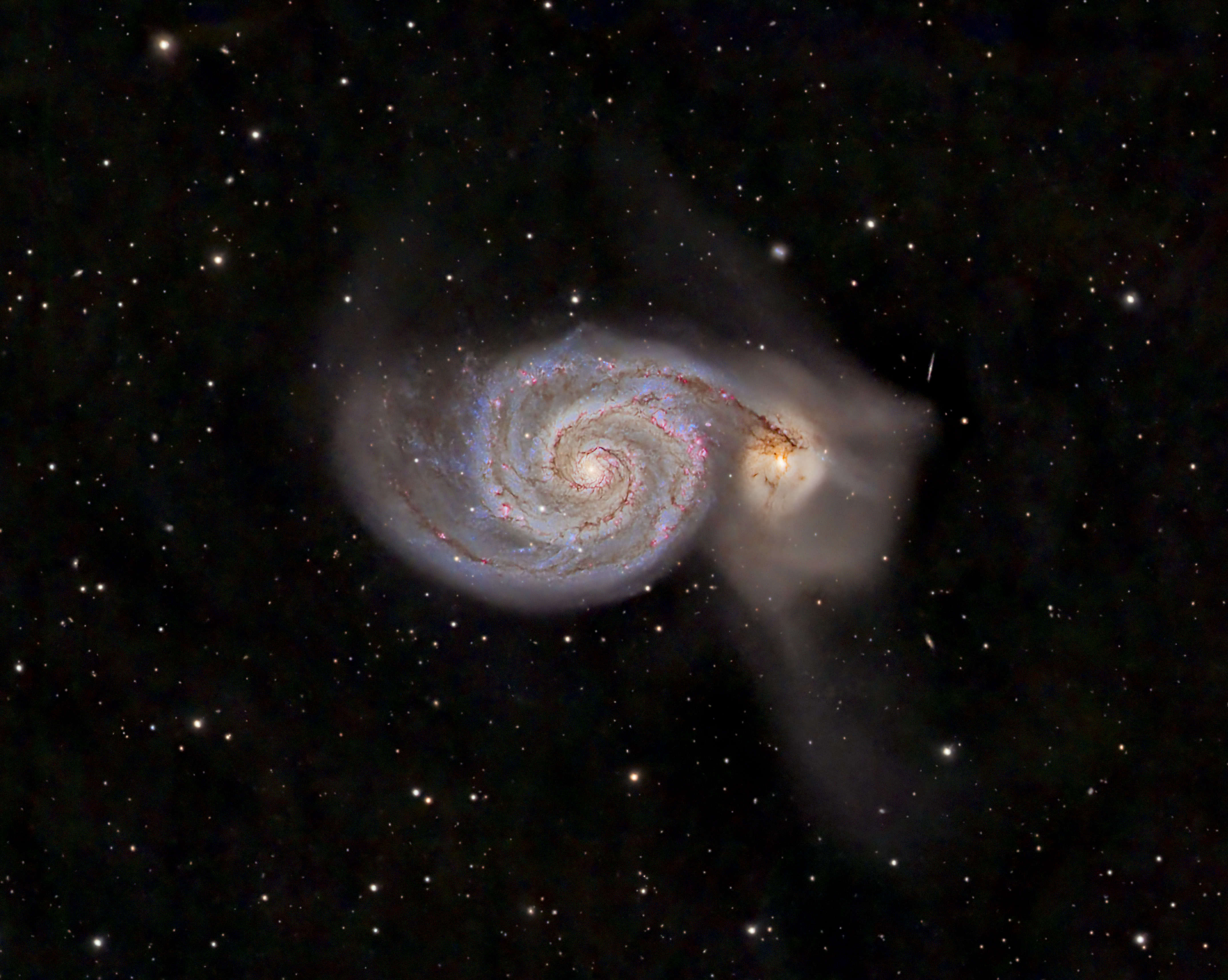 Galaxies, island universes outside our own, are many tens of millions of lightyears distant. While they appear to be independent and unto themselves, most of these island universes are interacting with others “nearby.” Some players in the intergalactic do-si-do are obvious, while the influence of an unseen partner shapes others. Astronomers believe the partners in the Whirlpool Galaxy have passed through each other and will continue to do so until they merge into one.
Galaxies, island universes outside our own, are many tens of millions of lightyears distant. While they appear to be independent and unto themselves, most of these island universes are interacting with others “nearby.” Some players in the intergalactic do-si-do are obvious, while the influence of an unseen partner shapes others. Astronomers believe the partners in the Whirlpool Galaxy have passed through each other and will continue to do so until they merge into one.
Supernova Remnants
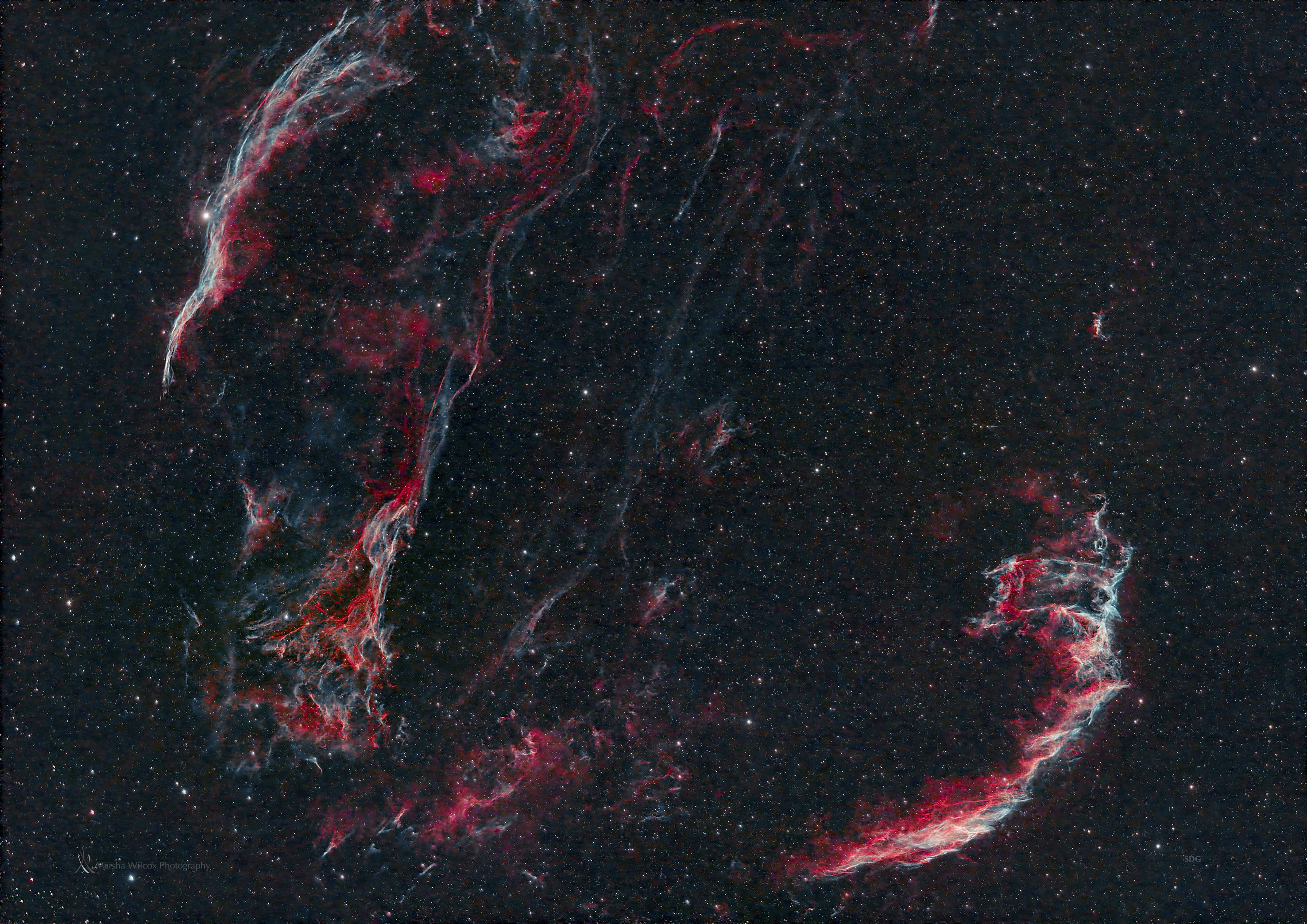 Violent supernovae result in ever-expanding stellar remnants. The Veil Nebula in the constellation Cygnus is the result of an explosion some 5,000 to 10,000 years ago. Fragile filaments are still expanding outward.
Violent supernovae result in ever-expanding stellar remnants. The Veil Nebula in the constellation Cygnus is the result of an explosion some 5,000 to 10,000 years ago. Fragile filaments are still expanding outward.
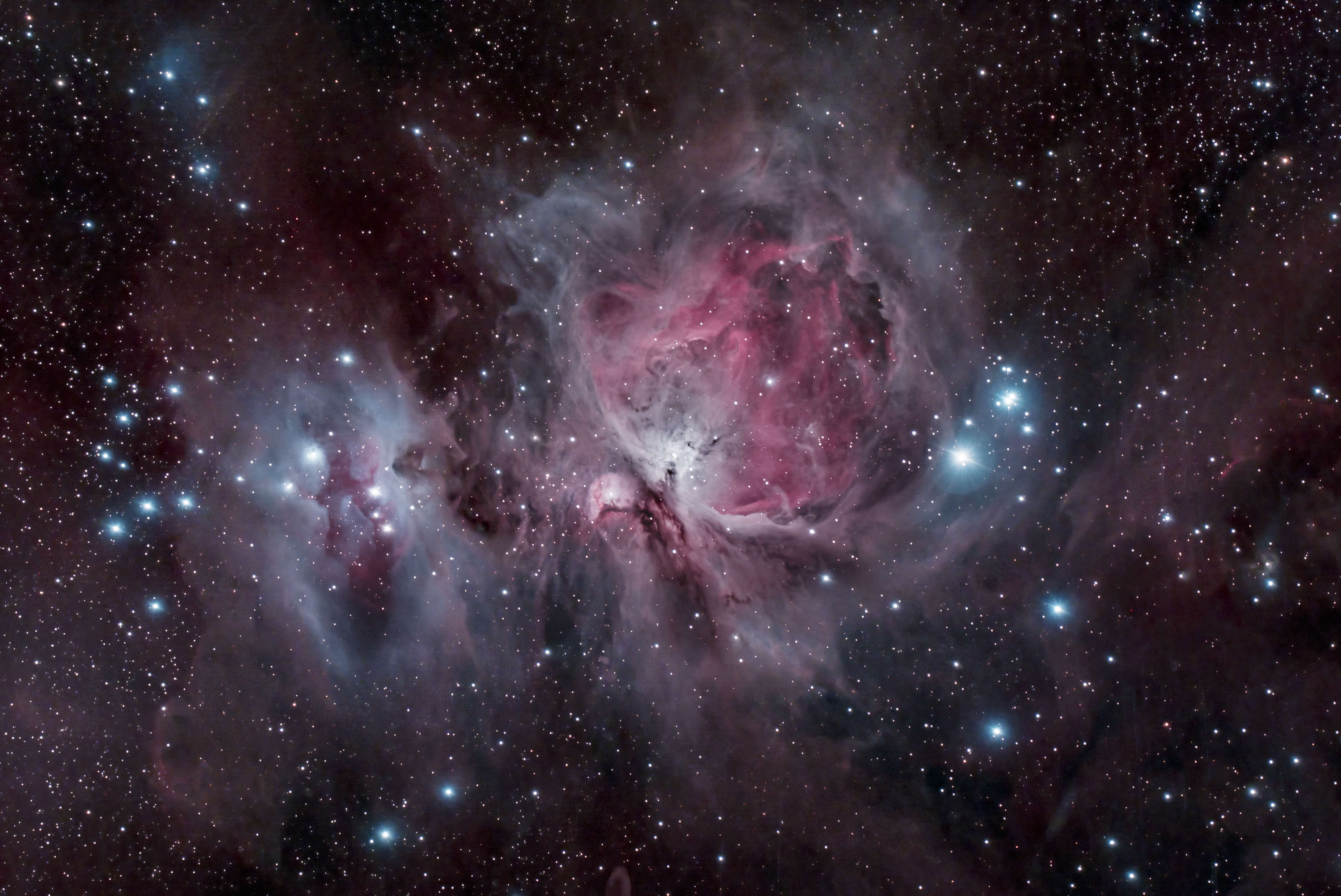 Emission nebulae, home to star birth, generate vast amounts of energy creating interstellar dust clouds. The visible light in these regions is in the red spectrum, dominated by ionized hydrogen-alpha (Ha) gas. The
Emission nebulae, home to star birth, generate vast amounts of energy creating interstellar dust clouds. The visible light in these regions is in the red spectrum, dominated by ionized hydrogen-alpha (Ha) gas. The  Much like the fog enveloping a streetlight at night can’t be seen until the light is turned on, reflection nebulae are quietly illuminated by bright stars behind. These nebulae are in the blue spectrum illuminating doubly ionized oxygen (Oiii).
Much like the fog enveloping a streetlight at night can’t be seen until the light is turned on, reflection nebulae are quietly illuminated by bright stars behind. These nebulae are in the blue spectrum illuminating doubly ionized oxygen (Oiii). 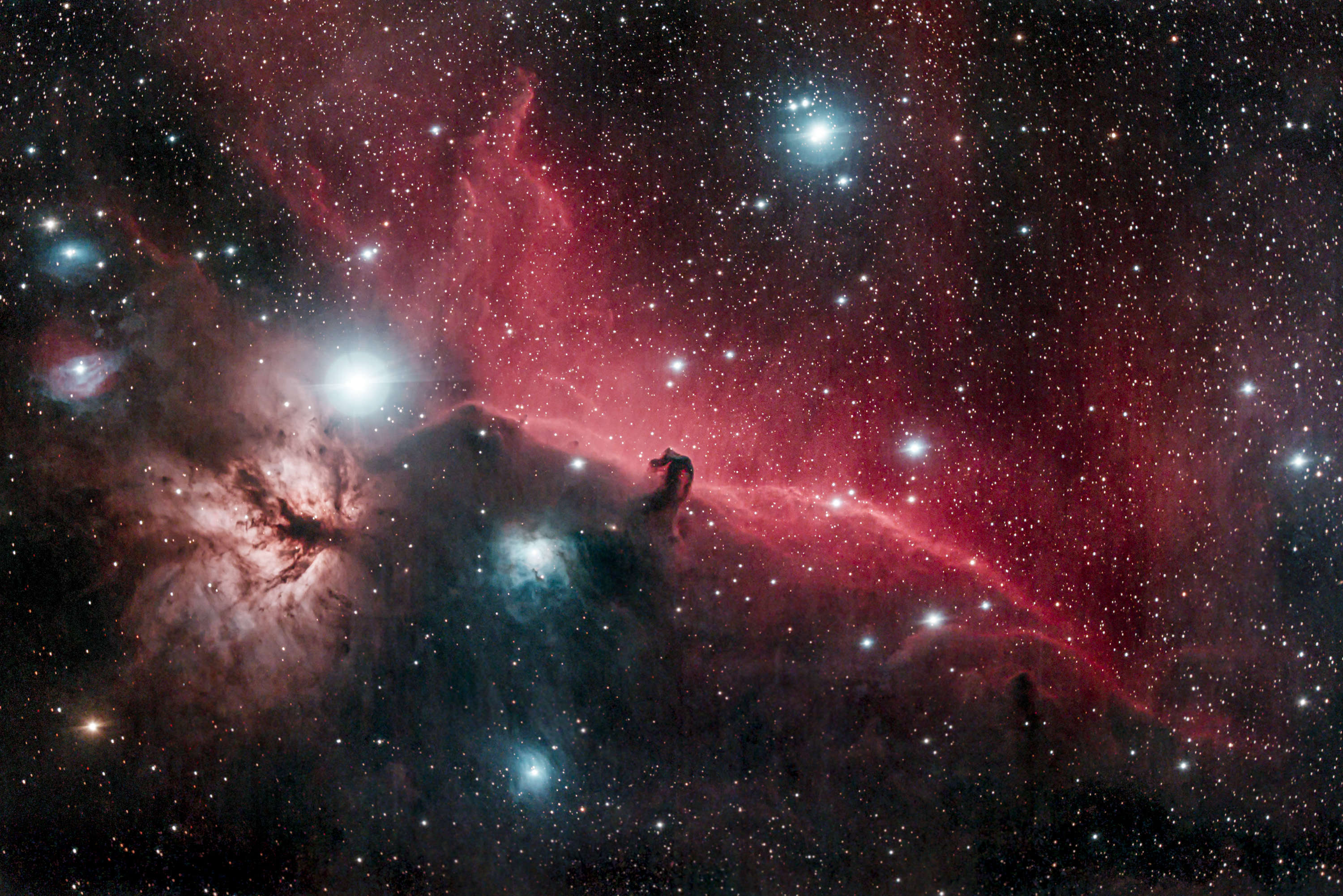 The mystery of obscured light is created by dark nebulae, dust, extinguishing light from behind. The
The mystery of obscured light is created by dark nebulae, dust, extinguishing light from behind. The 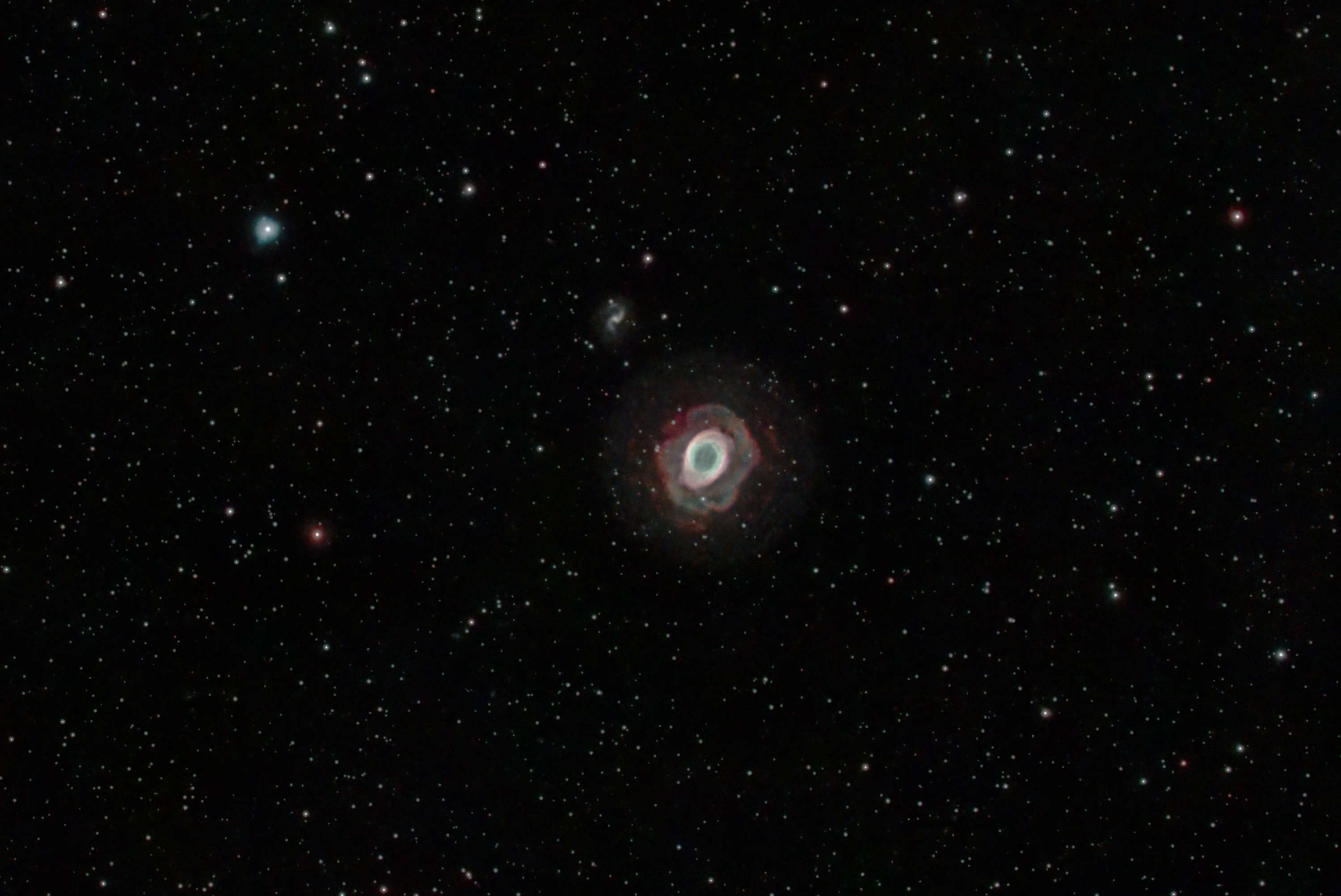 Other stars contract and slowly shed their outer layers, like a smoke ring, shrinking to become dwarf stars. The
Other stars contract and slowly shed their outer layers, like a smoke ring, shrinking to become dwarf stars. The